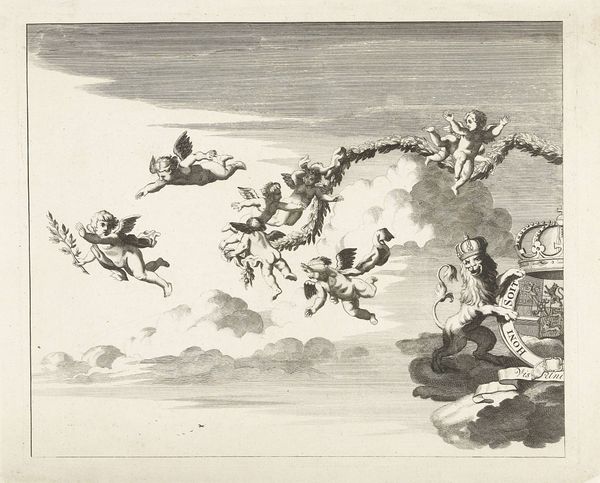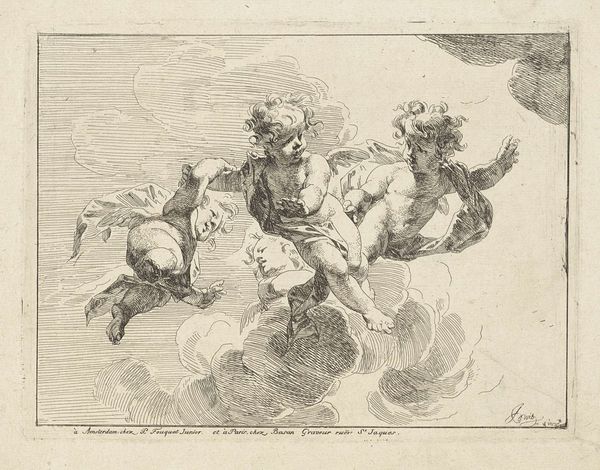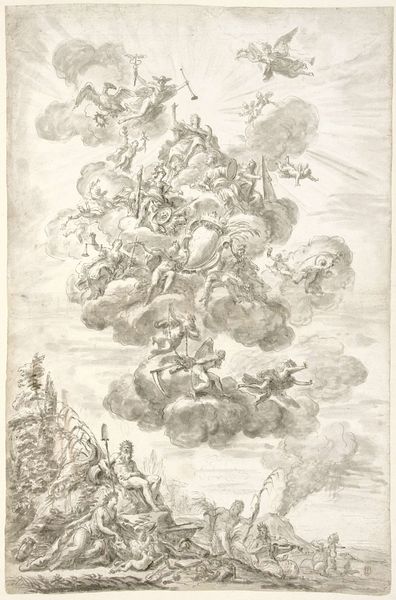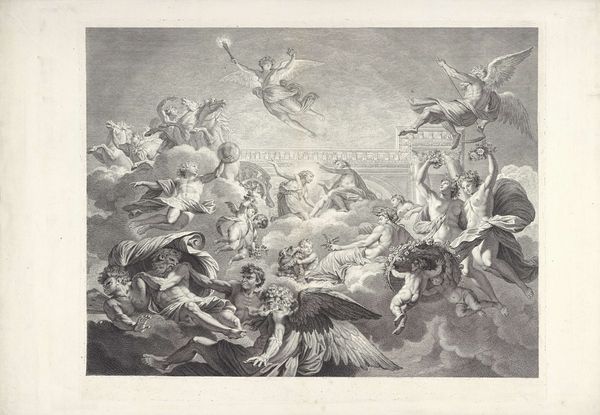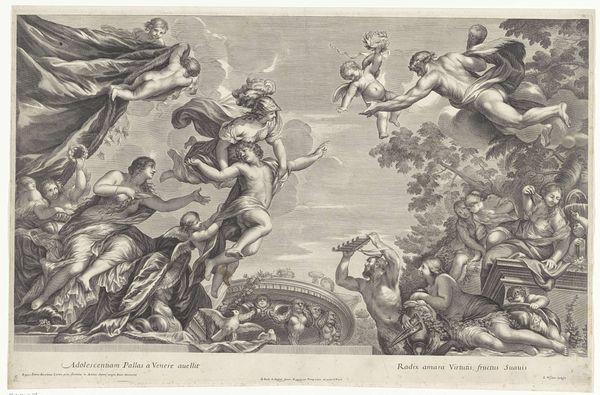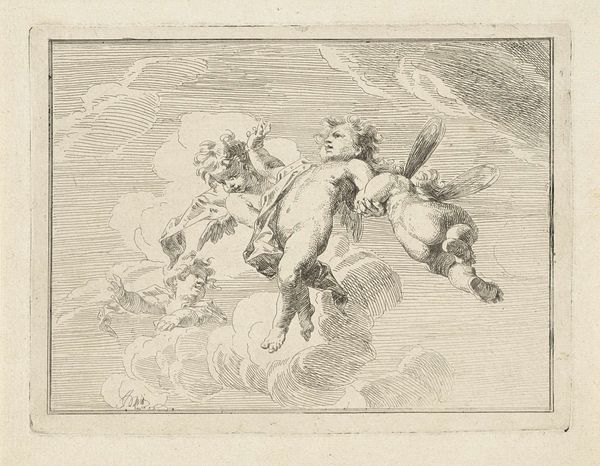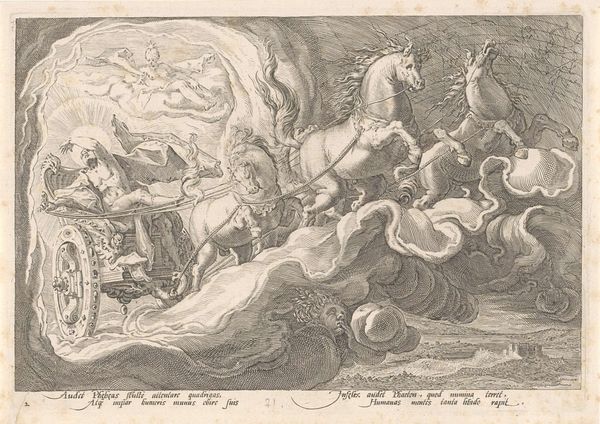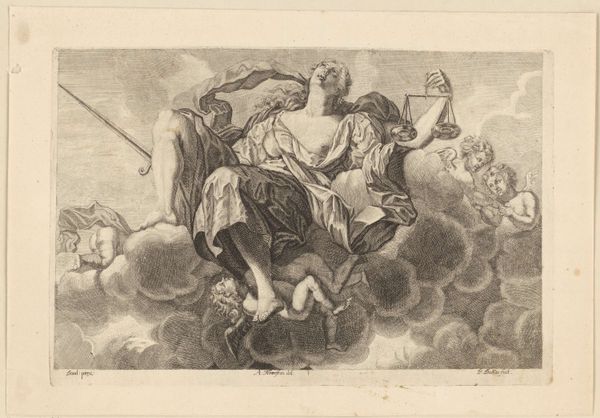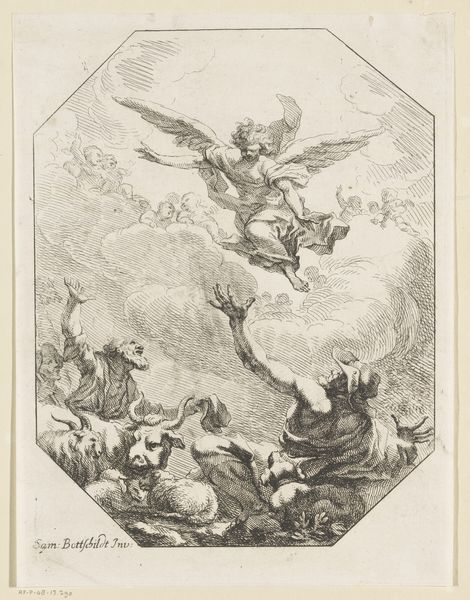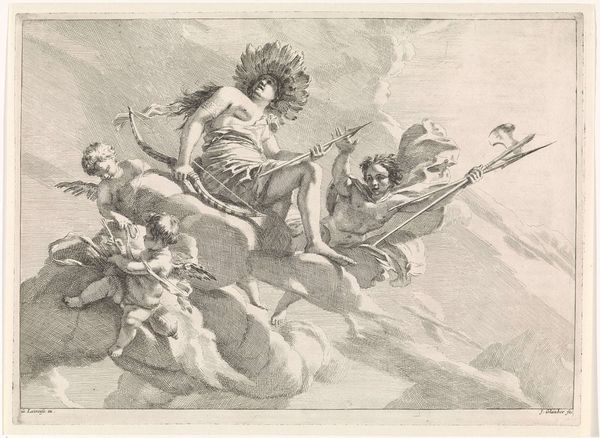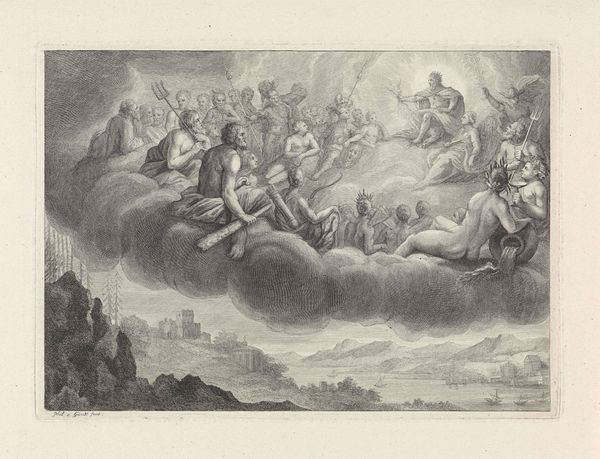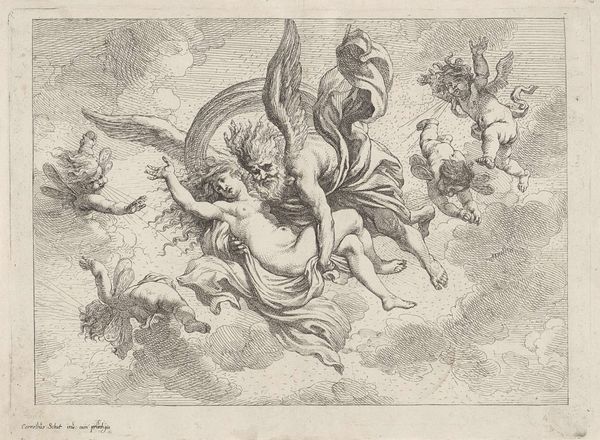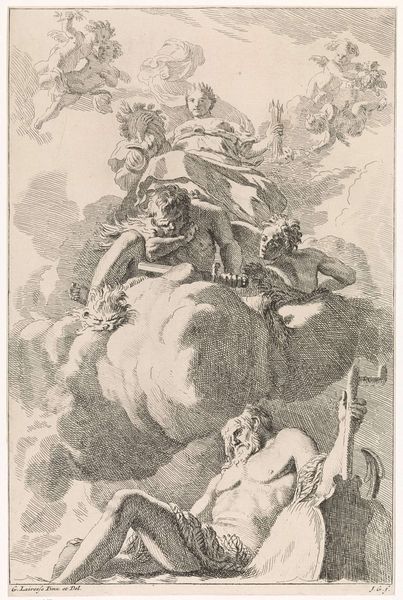
Wapens van prins Willem IV en Anna van Engeland, 1734 (rechterhelft) 1734
0:00
0:00
anonymous
Rijksmuseum
print, engraving
#
allegory
#
baroque
# print
#
history-painting
#
engraving
Dimensions: height 300 mm, width 373 mm
Copyright: Rijks Museum: Open Domain
Curator: My first thought is just...light. Like someone blew powdered sugar across the sky. Editor: That's a fitting impression. We're looking at "Wapens van prins Willem IV en Anna van Engeland, 1734 (rechterhelft)" or "Coat of Arms of Prince William IV and Anna of England, 1734 (right half)." It's a print from 1734 currently housed at the Rijksmuseum. Curator: "Print" doesn't quite capture it. It looks so delicate, like lace. The detail in those tiny cherubs! You can almost feel the fluffy clouds they’re lounging on. Editor: The artist worked in engraving, a process that necessitates a high degree of technical skill. Consider the economic and social conditions of printmaking in the 18th century: the role of workshops, the division of labor, the market for these images. Who was consuming imagery like this, and why? Curator: I get the 'why'—it’s pure propaganda! All these symbolic adornments must signify the illustrious union of William and Anna. Though the cherubs do their best to soften the blow. The unicorn—that’s Anna’s side, right? Much more fanciful than William's coat of arms. Editor: Precisely. And note how those armorial bearings, including the unicorn and the royal arms of England, were disseminated widely through prints like these. Print served not only to propagate royal images, but also enabled political participation and engagement in ways that were formerly unattainable. Curator: But it is such an ephemeral medium to declare these powerful and lasting statements, all from something that could be rolled up or pasted somewhere, such as the inside of a trunk, maybe. It makes the subject seem very grand, yet attainable at the same time, almost humorous. Editor: And that inherent accessibility challenges established notions of artistic value, highlighting instead the role of reproducibility and consumption in shaping cultural perceptions. I find the tension between medium and subject to be fascinating. Curator: Indeed. It really makes one wonder about the relationship between power and image, doesn’t it? Editor: Absolutely. It's an artifact that provides a glimpse into 18th-century Dutch society and how identity and power were being performed through printed matter.
Comments
No comments
Be the first to comment and join the conversation on the ultimate creative platform.
